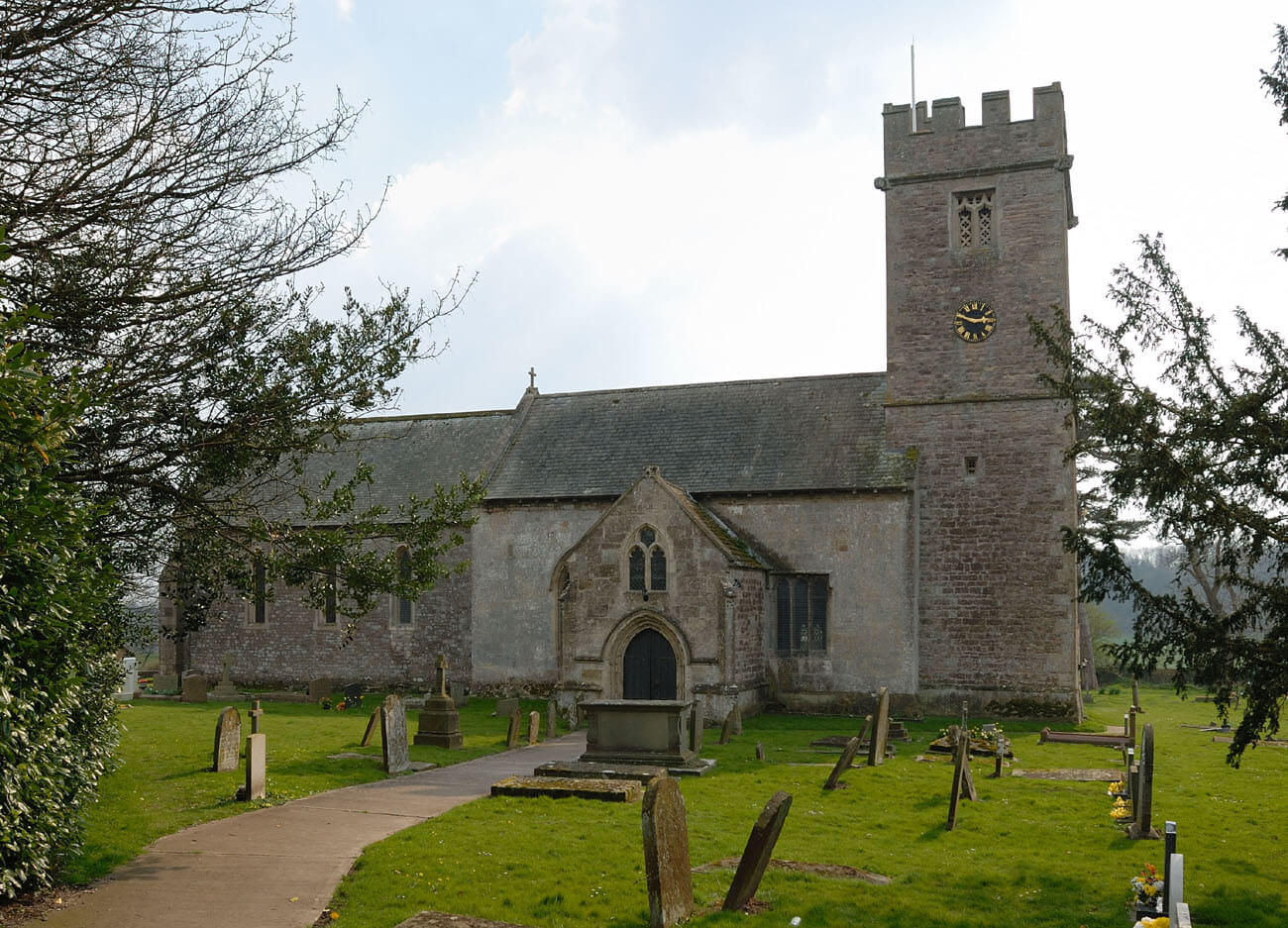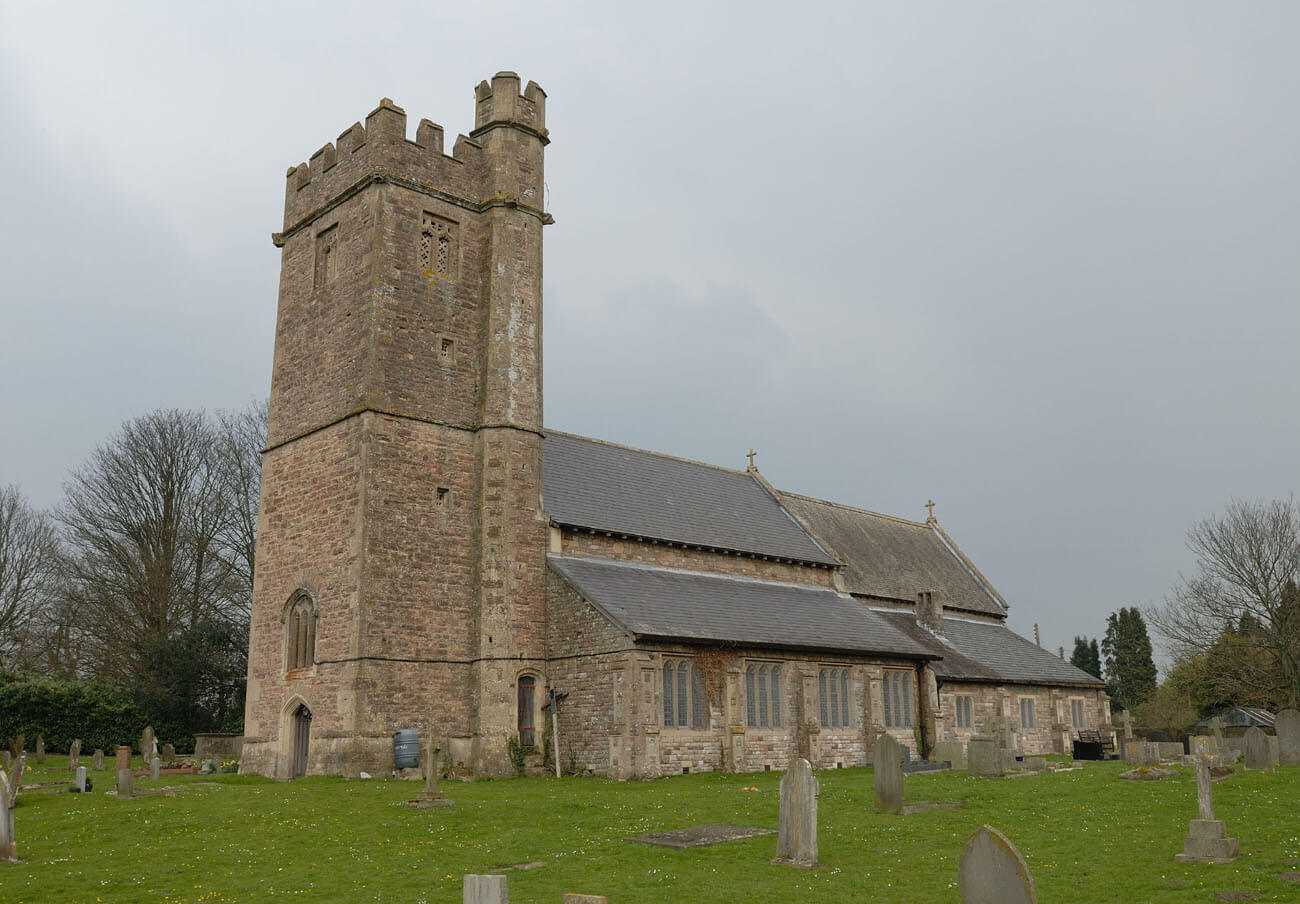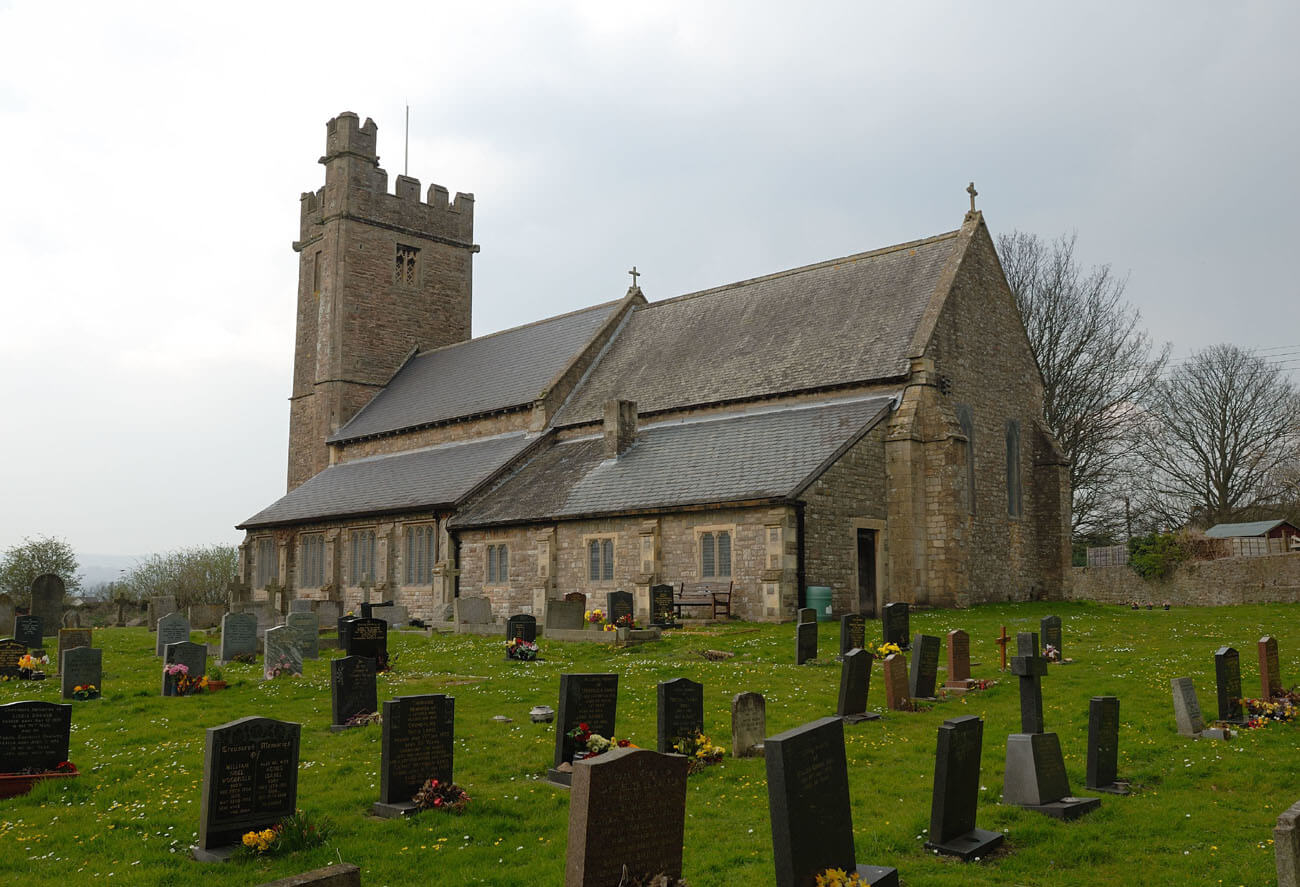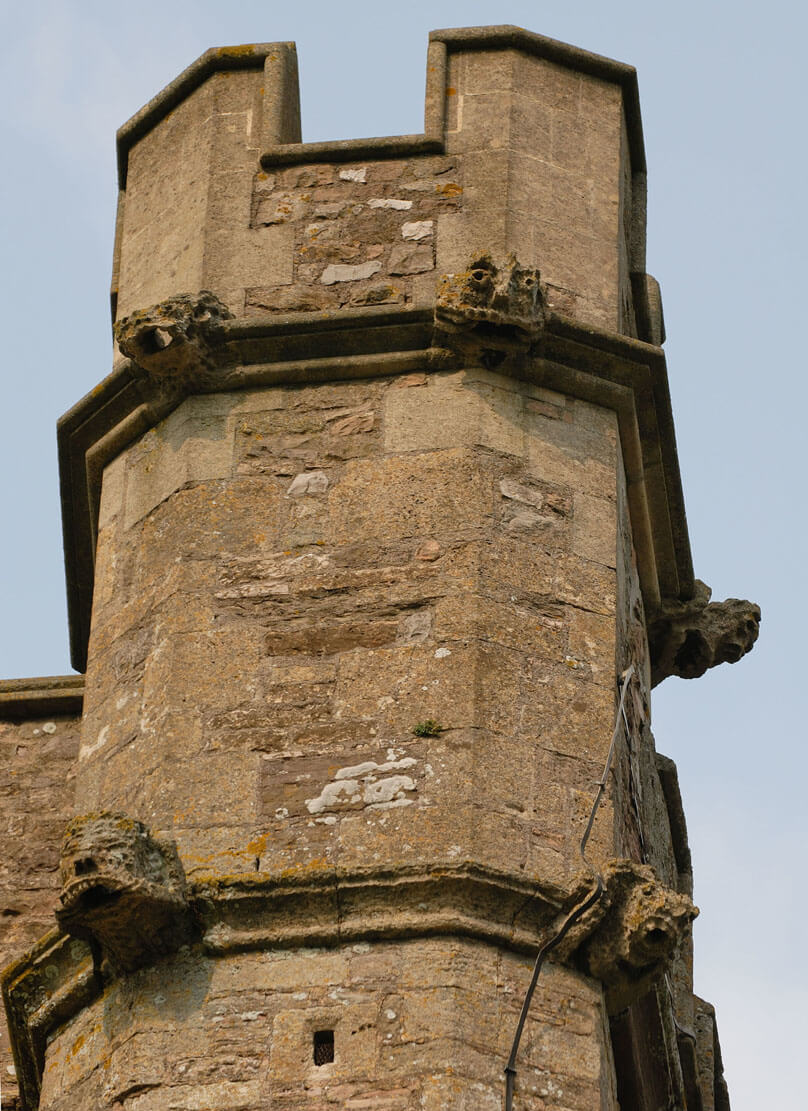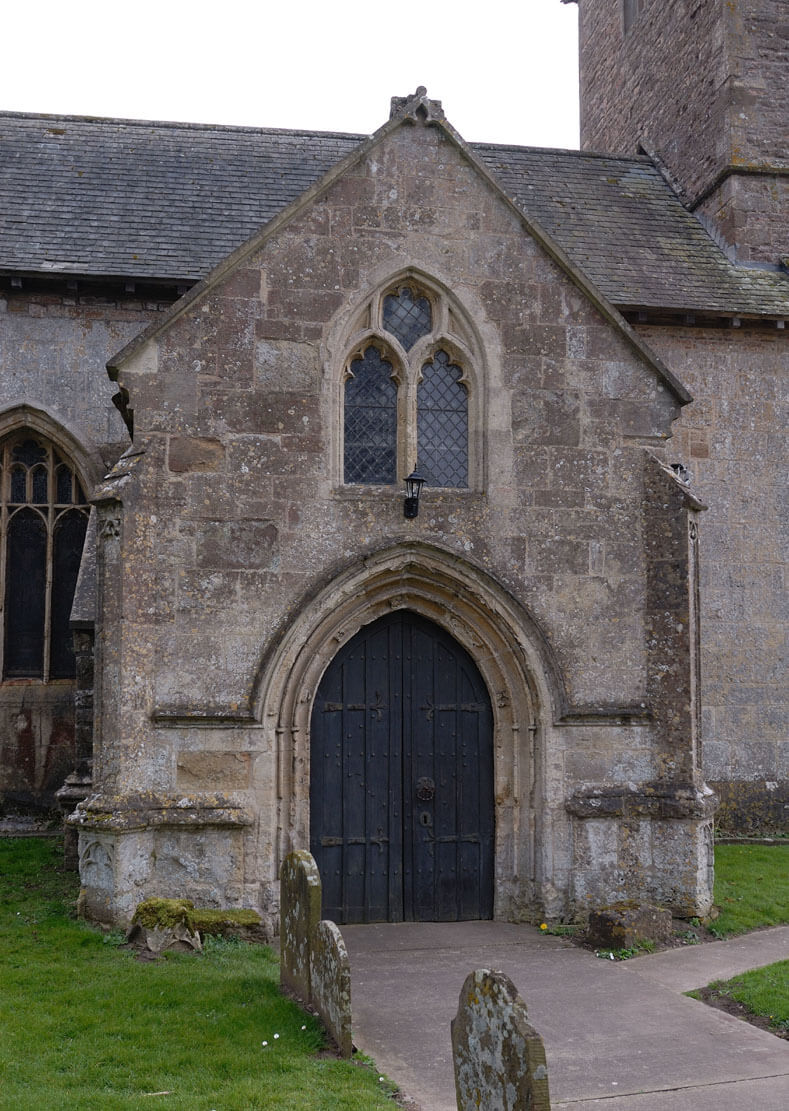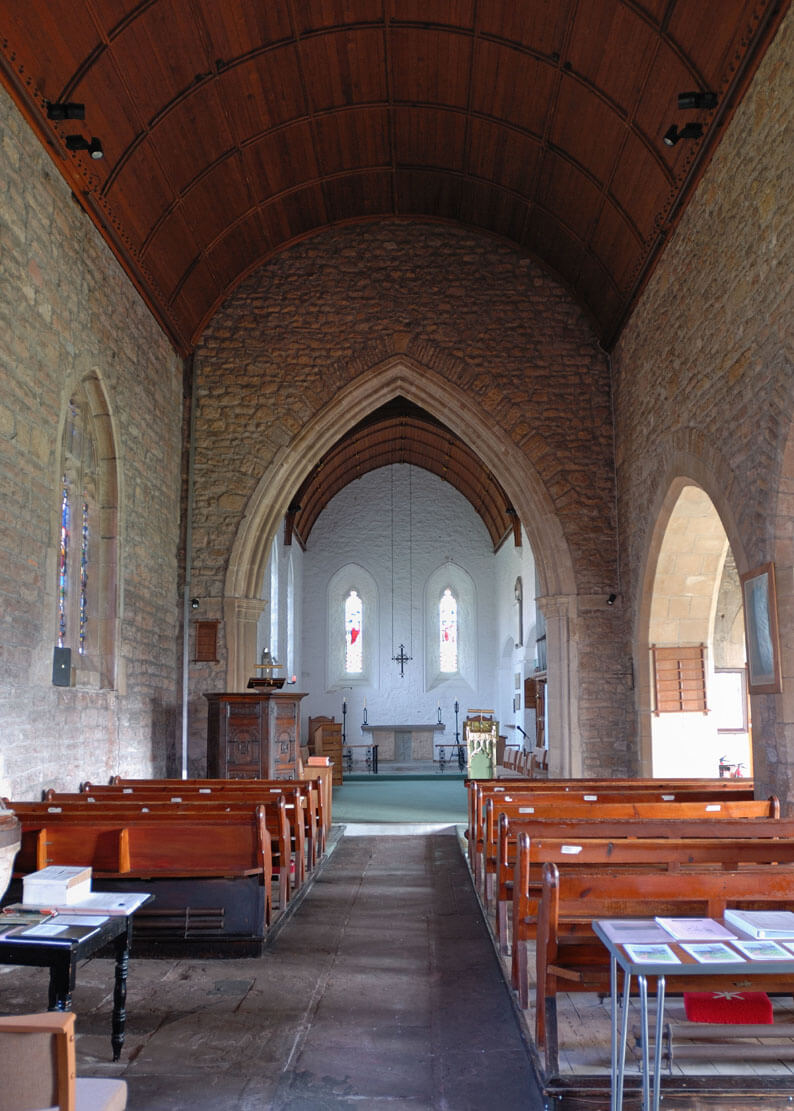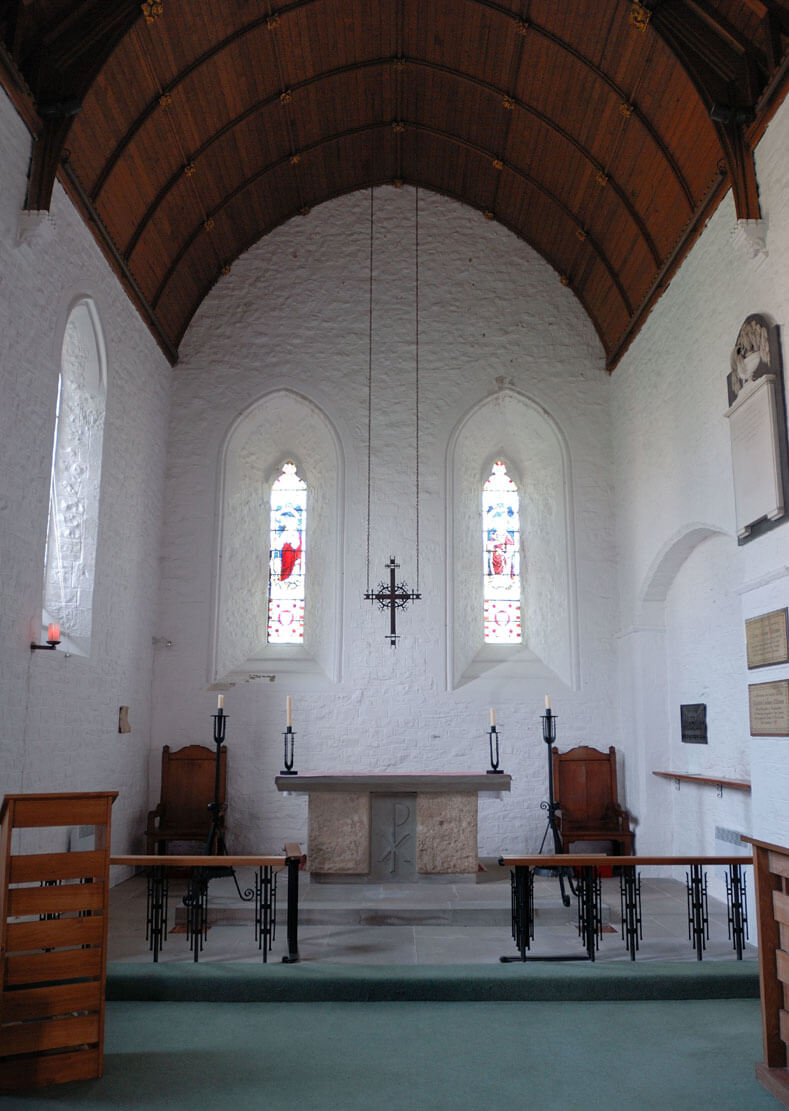History
The church of St. Stephen and St Tathan was built in the 13th century, probably using stones from the ruins of the Roman fort Venta Silurum. Although it is known, that in Caerwent was a church also before the Norman period, there is no evidence that it was in place of a medieval building. In the fifteenth century St. Stephen’s church was rebuilt and enlarged, and the porch and tower were added to the existing building. Subsequent changes were made during the Reformation period, when lateral, southern chapels were removed. In the years 1893-1894 and again in the years 1910-1912 the church was restored. During the last restaurant a small southern aisle was also erected. In 1968, the sacristy was added on the south side of the chancel.
Architecture
The medieval church initially consisted of a rectangular nave and also a rectangular but narrower chancel on the eastern side. At the southern wall of the chancel, three arcades were placed, leading to the no longer existing chapel. Also, the nave in the Middle Ages was adjacent to the south with a side chapel, opened inside with two arcades.
The chancel from the east was pierced with two pointed, narrow windows, filled with trefoil traceries and splayed towards the interior. It can be assumed that also the nave windows were originally small, pointed, with a pattern characteristic of the early Gothic period. The interior of the church was not vaulted, only a wooden barrel and a flat ceiling were used. The pointed arcade separating the presbytery from the nave, flanked by shafts with capitals, was richly moulded.
In the 15th century, a two-story porch on the north side and a four-sided tower on the west side were added to the nave. The tower was distinguished by corner gargoyles and a polygonal staircase. During these works, late-Gothic three-light windows were placed in the northern wall of the nave: one pointed and the other quadrilateral.
Current state
The present church differs from the medieval building. At the southern wall of the chancel, there are three arcades from the 13th century, which led to the nonexisting chapel, and two arcades in the southern wall of the nave to the chapel, probably destroyed in the 16th century. Today, its place is taken by a small neo-Gothic southern aisle. The northern windows of the chancel are the result of Victorian renovation, the original lancet openings have been preserved in the eastern wall of the chancel, and the late Gothic ones in the northern wall of the nave. The church is in the possession of several Roman monuments, including an altar dedicated to the Mars god, dating from 152 BC and the statue of Tiberius Claudius Paulinus, commander of the 2nd Augustus Legion, stationed at Caerleon.
bibliography:
Salter M., The old parish churches of Gwent, Glamorgan & Gower, Malvern 2002.
Webpage britishlistedbuildings.co.uk, Church of St Stephen and St Tathan (Tatheus), A Grade II Listed Building in Caerwent, Monmouthshire.

